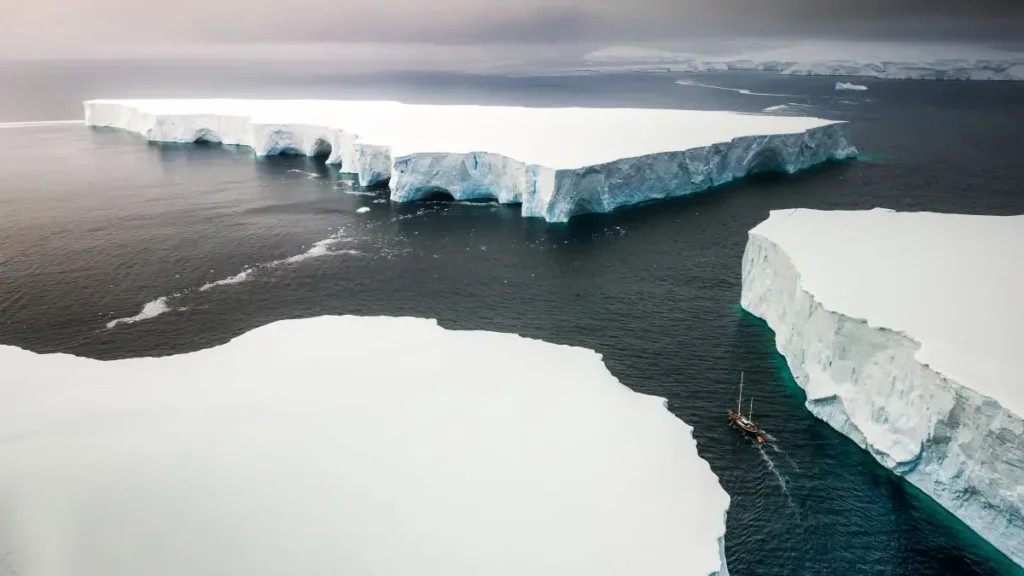A massive ice sheet in Antarctica, roughly the size of Great Britain, could be largely lost by the 23rd century due to rising global temperatures, scientists warn. The Thwaites Glacier, one of the world’s largest and fastest-moving glaciers, is undergoing rapid deterioration, sparking serious concerns about its potential impact on global sea levels.
Located in the Amundsen Sea Embayment in West Antarctica, the Thwaites Glacier has earned the nickname “Doomsday Glacier” due to its significant contribution to global sea level rise. Along with the surrounding area, this glacier currently accounts for 8% of the annual increase in sea levels, contributing 4.6 millimeters each year. If the glacier continues to melt at this accelerated pace, it could destabilize the entire West Antarctic Ice Sheet, which contains enough ice to raise sea levels by over three meters.
Recent studies conducted by climate scientists reveal that the Thwaites Glacier is particularly vulnerable to warming ocean waters. These waters are melting the glacier from below, destabilizing its foundations and accelerating its slide into the sea. The glacier’s ice shelf, a floating platform that acts as a natural barrier to slow the flow of ice from land into the ocean, is also disintegrating. Once the ice shelf collapses, the flow of ice will increase dramatically, further contributing to sea level rise.
The potential collapse of the Thwaites Glacier could have catastrophic consequences for coastal communities worldwide, submerging major cities and displacing millions of people. Experts have warned that even if global warming is limited to 1.5°C above pre-industrial levels, as outlined in the Paris Agreement, the glacier is still likely to lose a significant portion of its mass. This scenario would lock in centuries of sea level rise, making it one of the most pressing climate issues of the 21st century.
To mitigate the worst effects of the glacier’s collapse, experts stress the importance of immediate global action to reduce greenhouse gas emissions. Lowering emissions could slow the rate of warming and give scientists more time to develop adaptive measures to protect vulnerable regions. However, the window for meaningful action is closing fast, and the glacier’s fate may already be sealed without decisive action in the next few decades.
The Thwaites Glacier’s ongoing deterioration serves as a stark reminder of the far-reaching impacts of climate change. As the global community continues to grapple with environmental crises, scientists and policymakers alike are urging for more aggressive climate policies to avert the most devastating outcomes.



